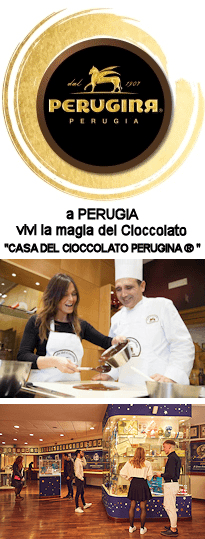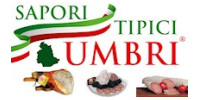The most noteworthy characteristic of Umbrian cuisine is its simplicity. It relies strongly on seasonal produce such as mushrooms and wild asparagus, on wild delicacies such as truffles, on vegetables, cereals, regionally reared meat – particularly lamb, pork and game – either cooked over the fire or worked into cured hams and salame.
Clearly truffles play an important part in many Umbrian dishes, starting from hors d’oeuvres such as crostini al tartufo – made with black truffles, crostini alla norcina – made using anchovies, truffles and chicken liver, and chicken liver crostini – made with chicken liver, capers and a squeeze of lemon.
The region’s bread varieties, such as pan caciato, pan nociato, pane di Strettura and the unsalted bread of Terni are also much appreciated.
Probably the most typical Umbrian pasta dish are spaghetti – or strangozzi – with black truffles. Other pasta course highlights include umbrichelli in salsa di Trasimeno – with perch filets, shallots, garlic and chilli pepper –, spaghetti col rancetto – with bacon, cherry tomatoes and fresh pecorino cheese –, pappardelle alla lepre – with hare ragout, bacon and cloves. Ciriole alla ternana is a variety of pasta made using just water and flour, and is usually served with a garlic, oil and chili pepper – a dish that appears also in the traditional cuisine of both Narni and Spoleto, only with the name of strangozzi. Besides an abundance of meat dishes, generally either grilled over the fire or cooked on the spit with an abundance of herbs, Umbria also boasts two particularly tasty soups: one made with chick peas and the other with chestnuts.
Among the region’s most typical main courses is Terni’s colombaccio selvatico, or palomba (turtledove), generally cooked on the spit. The area around Orvieto specialises in the so-called gallina ubriaca (literally, “drunken hen”) chicken cooked in plenty of good Orvieto wine. Specialities from Perugia include roast lamb’s head and torello alla perugina.
Generally reserved for special annual festivities or religious ceremonies, traditional Umbrian desserts are almost always baked in the oven, with a predilection for ingredients such as almonds, spices or candied fruit. Among the best known are the Torcolo di San Costanzo – a typically Perugian dish traditionally prepared on January 29th, the feast day of St Costanzo, one of the city’s three patron saints. Panpepato is a form of Christmas ‘biscuit’ common throughout Central Italy, while the ciaramicola is a speciality unique to Perugia and is traditionally baked for Easter. The Assisi rocciata, a spiral kind of pastry sausage vaguely resembling a strudel, is also made in slightly different versions in Foligno and Spoleto. The classic rustic bread known as brustegnolo derives from Umbria’s peasant tradition and can include dried fruit in the mixture, while the frittelle di San Giuseppe are typical of Orvieto and are baked for the city’s patron saint whose feast day falls on March 19th.
The Terni colombaccio wild pigeon dish requires an initial phase of being cooked over the spit, after which the bird is placed in a casserole to stew with a sauce known as ghiotta, made with seasonings and the gravy from the bird during the previous cooking phase.
Norcia’s fame as centre for the production of cured meats has even produced the term norcino, used in the Italian language to indicate all kinds of meats preserved in this manner. Visitors to the city in northern Umbria will be able to savour the extraordinary variety of cured meats, from cojoni di mulo to boar sausages, DOC and IGP denomination Norcia prosciutto, and Ciauscolo, made with the shoulder cut of the pork, bacon and pork fat all minced three times and ideal for spreading over bread.
Norcia is also the homeland of the black truffle, which is exported throughout the world along with the white varieties of Città di Castello and Gubbio. These tubers are ideal both for the preparation of tasty appetisers and with pasta, and are also used in fresh and seasoned cheeses from the area – particularly in Umbrian pecorino cheese or the local formaggio di fossa, seasoned in the soil.
As well as playing an important role in the traditional Umbrian diet, a number of the region’s vegetables and cereals have earned the prestigious DOP quality denomination label. These include Lake Trasimene beans, Cannara onions and Trevi black celery. In terms of extra-virgin olive oil, Umbria boasts no less than five different DOP denomination varieties: Colli Orvietani, Colli Martani, Colli Amerini, Colli di Assisi-Spoleto, Colli del Trasimeno. Umbria’s largest production centre for olive oil is Trevi, around which visitors will be able to admire entire mountain sides given over to the cultivation of this legendary tree.
Surprisingly, Umbria also has a long standing history in the production of chocolate. Founded in 1907, the Perugina chocolate factory rose to international popularity and fame with its Baci, made with ground hazelnuts and dark chocolate. Initially named cazzotti, Baci were re-baptised by the decadent Italian poet Gabriele D’Annunzio. The original machinery used in the production of Perugina chocolate is on display at a museum devoted to the history of the factory that opened in 1997. In 1988 Perugina was incorporated into the holdings of the Swiss multinational Nestlé.
Our network:
Wednesday 20 November 2024
Typical Umbrian dishesAll'inizio |

| THEMATIC HOLIDAYS | go |
• Ancient documents and illuminated manuscripts
• Renaissance Umbria
• Umbria the Poet’s Muse
• Umbria With the Kids: Perugia’s Città della Domenica
• Golf & Art in Umbria
| WINE AND FOOD | go |
• Typical Umbrian dishes
• Umbrian cuisine
• Typical Umbrian produce, where to buy and where to taste
• Typical Umbrian food
• Wine Tours in Umbria
• Umbrian Wines and Regional Wine Trails
• Enoteche, vinerie and wine bars in Umbria
• Umbrian Wines
• Wineries and wine tasting in Umbria
| ITINERARIES | go |
• Contemporary art in Umbria
• The female saints of Umbria
• Benedictine monasteries
• Ancient castles and fortresses
• Guided tours and itineraries in Umbria

| PARKS AND NATURE RESERVES | go |
• Lake Trasimene
• Parco Fluviale del Tevere
• Parco Regionale del Lago Trasimeno
• Parco Regionale del Monte Subasio
| WHAT TO SEE & DO | go |
• Cooking courses in Umbria
• The Nahar adventure park, enclosed within one of Italy 's largest alpaca farming areas, offers tourists the chance to spend a day experimenting new sports and generally having a good deal of fun in an unparalleled natural setting!
• PIERMATTEO D’AMELIA and the Renaissance in Southern Umbria
• FRANTOI APERTI Following the DOP Umbria quality olive oil trail
• Wedding in Umbria
• MAP of UMBRIA to travel in Umbria
• Tourist guides of Umbria
• Quality produce - sustainable success stories
• Oil mills and producers across the region Umbria
• Academies, Schools in Umbria and Italy
• Exhibition Perugino, divine painter
• Itineraries & Packages
Booking.com
• Beauty Farms in Umbria
• Wellness in Umbria: opportunities for tourists
• Spiritual Retreats in Umbria
• Dermocosmetici Oro of Spello for protecting your skin
• Wellness in Umbria
• Rafting
• Paragliding and Hang-Gliding
• Horse Riding in Umbria
• Golf in Umbria
• Umbria by Bike
• Getting married in Umbria
• SM.MA. rental of equipment, marquees and gazebos for catering and banqueting
• Company meetings in Umbria
• Venues and Entertainers for Events in Umbria
• San Gemini - Centro Congressi
• Park Hotel ai Cappuccini in Gubbio
• Events and Cerimonies in Umbria – Deals and Offers
• Conferences and Conventions – the Advantages of Choosing Umbria

• Textiles and Lace-Making in Umbria
• Deruta Ceramics
• Cabinetmaking in Città di Castello
• Woodcarving in Umbria
• Ceramics in Umbria Art and Tradition
• The Ceramics of Deruta

| BEAUTY & WELLNESS | go |
• Wellness in Umbria: opportunities for tourists
• Spiritual Retreats in Umbria
• Dermocosmetici Oro of Spello for protecting your skin
• Wellness in Umbria
| SPORT | go |
• Paragliding and Hang-Gliding
• Horse Riding in Umbria
• Golf in Umbria
• Umbria by Bike
| WEDDING | go |
| MICE (MEETING INCENTIVES CONFERENCES EVENTS) | go |
• Company meetings in Umbria
• Venues and Entertainers for Events in Umbria
• San Gemini - Centro Congressi
• Park Hotel ai Cappuccini in Gubbio
• Events and Cerimonies in Umbria – Deals and Offers
• Conferences and Conventions – the Advantages of Choosing Umbria

| HANDICRAFT | go |
• Deruta Ceramics
• Cabinetmaking in Città di Castello
• Woodcarving in Umbria
• Ceramics in Umbria Art and Tradition
• The Ceramics of Deruta









